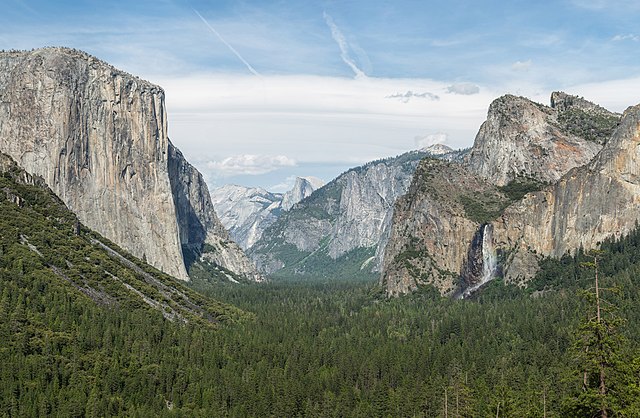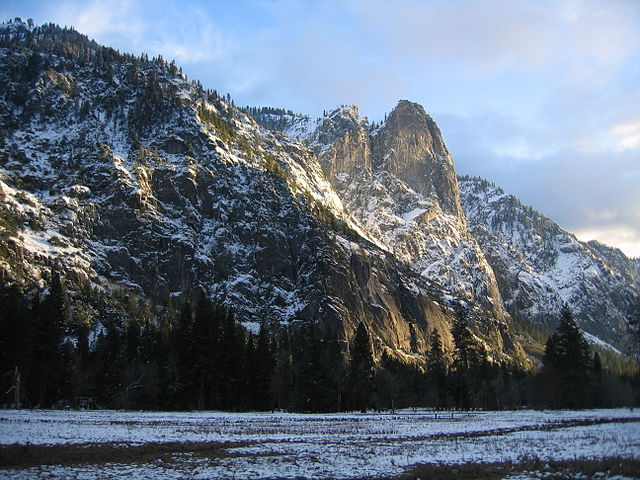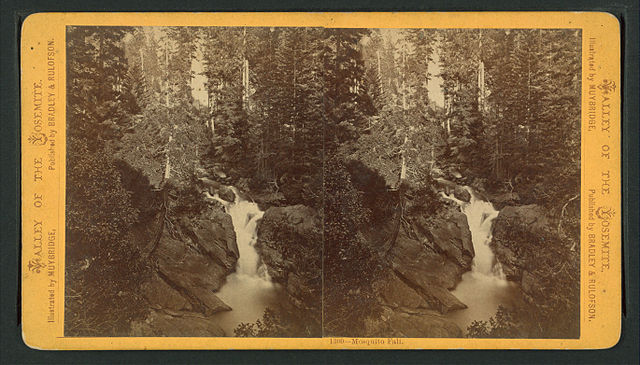Carleton E. Watkins (1829–1916) was an American photographer of the 19th century. Born in New York, he moved to California and quickly became interested in photography. He focused mainly on landscape photography, and Yosemite Valley was a favorite subject of his. His photographs of the valley significantly influenced the United States Congress' decision to preserve it as a National Park.
Carleton Watkins
Yosemite Valley, View from Inspiration Point, 1879, in the Princeton University Art Museum
Minerva Terraces, Mammoth Hot Springs, National Park, by Watkins
Smelting Works, New Almaden, by Watkins
Yosemite Valley is a glacial valley in Yosemite National Park in the western Sierra Nevada mountains of Central California, United States. The valley is about 7.5 mi (12.1 km) long and 3,000–3,500 ft (910–1,070 m) deep, surrounded by high granite summits such as Half Dome and El Capitan, and densely forested with pines. The valley is drained by the Merced River, and a multitude of streams and waterfalls flow into it, including Tenaya, Illilouette, Yosemite and Bridalveil Creeks. Yosemite Falls is the highest waterfall in North America and is a big attraction, especially in the spring, when the water flow is at its peak. The valley is renowned for its natural environment and is regarded as the centerpiece of Yosemite National Park.
Tunnel View
Sentinel Rock at sunset
Yosemite Valley
Mosquito Fall, stereographic photo by Eadweard Muybridge, c. 1868–1873








